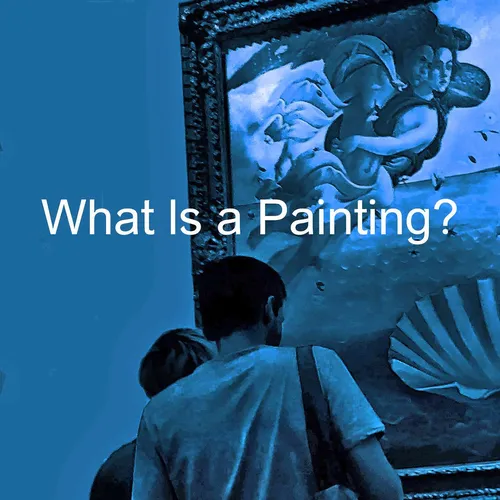
What Is a Painting?
What do you see when you look at a painting? You see the subject and the style of the work but also the materials and technologies used to create it and the traces of everything that has happened to it. Professional paintings conservator Jean Dommermuth considers how all of those factors contribute to what a painting is. You don’t need to know anything about art history to enjoy this podcast, but no matter what, you’ll never look at a painting the same way again. You can find images and related materials at jeandommermuth.com/podcast
- Update frequency
- every 41 days
- Average duration
- 30 minutes
- Episodes
- 26
- Years Active
- 2022 - 2025

Episode 26 - Particular Magic
How did Venetian painters of the 16th century use canvas supports and oil medium to create a new kind of painting?

Episode 25 - A Big Cloth
How have natural aqueous media been used over the centuries, including by one of the most famous artists of the 20th century?

Episode 24 - Reinforcements
What can be done to reinforce a degraded canvas support of a painting, and how can that change that painting's look?

Episode 23 - Glue and Blues
How does paint made from animal glue and different blue pigments work, look, and age?

Episode 22 - A Little Cloth
What is the canvas of a canvas painting, and why and how was it used?

Episode 21 - A Copy of a Copy: The Ghent Altarpiece, Part 4
What's the story of the painting of the Just Judges panel now on display in Ghent?

Episode 20 - A Missing Piece: The Ghent Altarpiece, Part 3
Where is the Just Judges panel of the Ghent Altarpiece?

Episode 19 - The Sum of Many Parts: The Ghent Altarpiece, Part 2
What happened to the Ghent Altarpiece between 1566 and 1934?

Episode 18 - A Complex Whole: The Ghent Altarpiece, Part 1
What is the Ghent Altarpiece, how was it created, and what changes did it undergo in the first 125 years of its existence?

Episode 17 - A Changing Landscape
How did Early Netherlandish painters use different materials to create different kinds of landscapes, and how have those paintings changed over time?

Episode 16 - Translucent Color
How does the use of different media affect the look of paint?

Episode 15 - An Elaborated Sketch
How were the underdrawings of Early Netherlandish paintings made and how can we see them?

Episode 14 - More Memories of the Forest
Why are the oak panels of Early Netherlandish paintings good supports, and what can they tell us?

Episode 13 - A Dark Mirror
How do Early Netherlandish paintings differ from Early Italian paintings - in how they look, what they mean, and what they are?

Episode 12 - A Survivor of the Flood, Part 2
What's the story of the Cimabue Crucifix at Santa Croce, Florence? From 1966 until now.

Episode 11 - A Survivor of the Flood, Part 1
What's the story of the Cimabue Crucifix at Santa Croce, Florence? From the thirteenth century until 1966.

Episode 10 - New Again
How do modern and contemporary paintings reflect some of the physical aspects of Early Italian paintings? Some thoughts about engaged frames and the use of gold leaf.

Episode 9 - An Imitation of Luxury
How did Early Italian painters combine gold and paint to imitate luxury textiles?

Episode 8 - Egg and Bright Earth
What are the components of the paint used by Early Italian painters, how did they use it, and how has it changed over the centuries?

Episode 7 - Half-Solidified Sunlight
How were the gold backgrounds of Early Italian paintings created, and how have they changed over time?